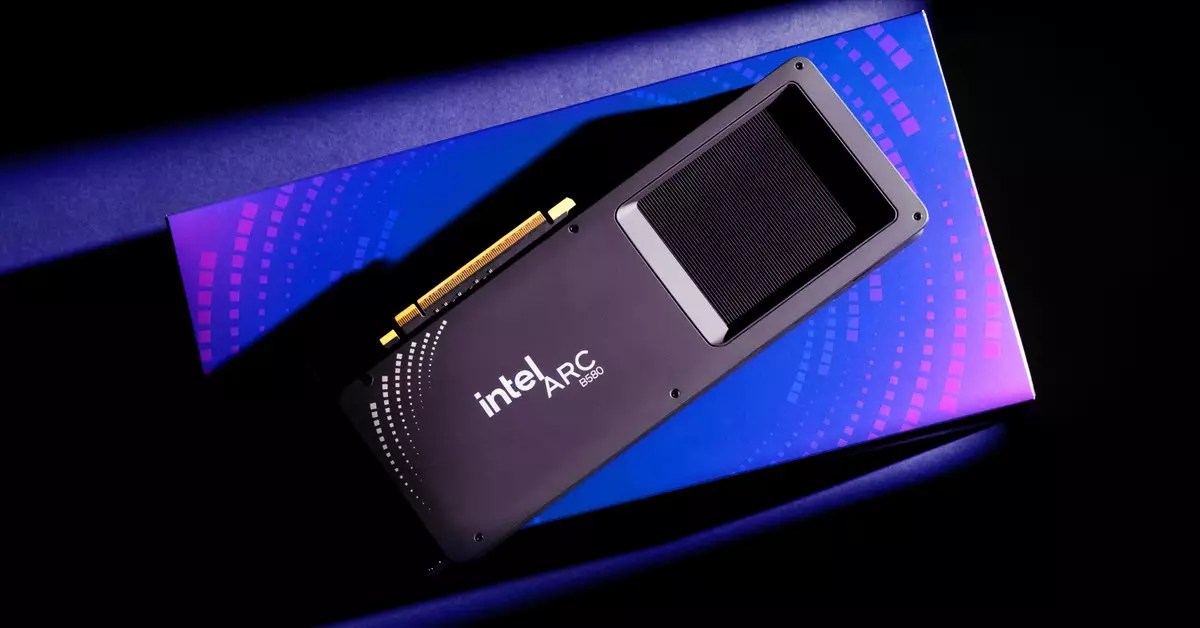Intel, a name synonymous with processors, has faced challenges in recent years as it attempted to carve a niche in the discrete graphics card market. In a year marked by disappointing product launches and competitive pressure from AMD and Nvidia, the company’s recent launch of the Arc B580 “Battlemage” GPU has generated a wave of optimism. As it positions itself against established competitors, Intel is attempting not only to regain its footing but also to redefine perception within the graphics card industry.
Priced at $250, the Arc B580 has quickly gained notoriety for its performance and capabilities. While the reviews from various journalists have been overwhelmingly positive—a rare feat in a market brimming with skepticism—Intel still faces the considerable task of maintaining supply in a climate where demand is outweighing availability. Reports suggest that the initial batch of B580 GPUs sold out almost immediately, indicating a robust interest from the gaming community.
Intel spokesperson Mark Anthony Ramirez has stated that they are committed to providing weekly inventory updates to meet consumer demands. This dedication to regular replenishment signifies Intel’s understanding of the current market’s appetite for new and effective products. However, sustained demand could create challenges if supply chains do not adapt quickly enough.
One of the most notable aspects of the B580’s launch is its strategic timing against the backdrop of underwhelming offerings from its closest competitors, the Nvidia RTX 4060 and AMD RX 7600. Following years where GPU prices soared disproportionately, these rival cards have failed to excite consumers, leading to dissatisfaction and critical reviews alike. Phrases like “wet fart” have been used to describe the RTX 4060, while the B580 has emerged as a compelling alternative owing to its performance-to-price ratio.
In a market where consumers have grown weary of hefty price tags and mediocre performance, the launch of the Arc B580 comes as something of a breath of fresh air. Even though it may not consistently outclass the 4060 and 7600, particularly at lower resolutions like 1080p, it offers a compelling combination of price and performance that seems to hit a sweet spot for many gamers.
One critical feature of the Arc B580 is its generous allocation of 12GB of video RAM, an attribute that sets it apart from other offerings in a similar range. This memory size not only provides an edge in handling texture-heavy games but also indicates Intel’s commitment to catering to the evolving demands of modern gaming. Moreover, early reviews suggest that the drivers supporting the B580 are more developed than those associated with earlier Intel graphics offerings. This responsiveness to user feedback and technical iteration is what many tech enthusiasts have been waiting for.
However, while the B580 has found favor among reviewers, its ultimate success in the market will hinge on sustained availability and long-term reliability. Should Intel succeed in this regard, the B580 could herald a resurgence for the company in a market once monopolized by two giants.
The Road Ahead: Challenges and Opportunities
While there is undeniable excitement surrounding the B580, Intel must navigate several hurdles to ensure it translates initial success into ongoing relevance in the GPU market. For instance, upcoming products from AMD and Nvidia loom on the horizon, promising advancements that could reshape user expectations. These looming releases could jeopardize the traction that Intel has just begun to build.
Furthermore, as the industry grapples with supply chain complexities exacerbated by global events, Intel must prioritize establishing strong partnerships with retailers and distributors to facilitate a smooth roll-out of the B580 models. This collaborative approach will be paramount to maintaining a positive consumer sentiment and solidifying a dedicated customer base.
The Arc B580 represents not only a strong entry into graphics performance by Intel but also serves as a reflective mirror of the current GPU landscape. The implications of its launch, particularly against a backdrop of competing products that have elicited dissatisfaction, are profound. As Intel continues to hone its offerings and tackle supply challenges, the future of its discrete graphics cards may be brighter than it has been in years.


Leave a Reply